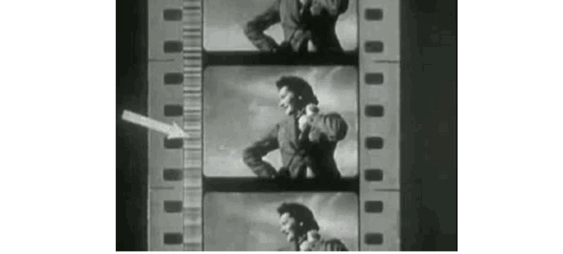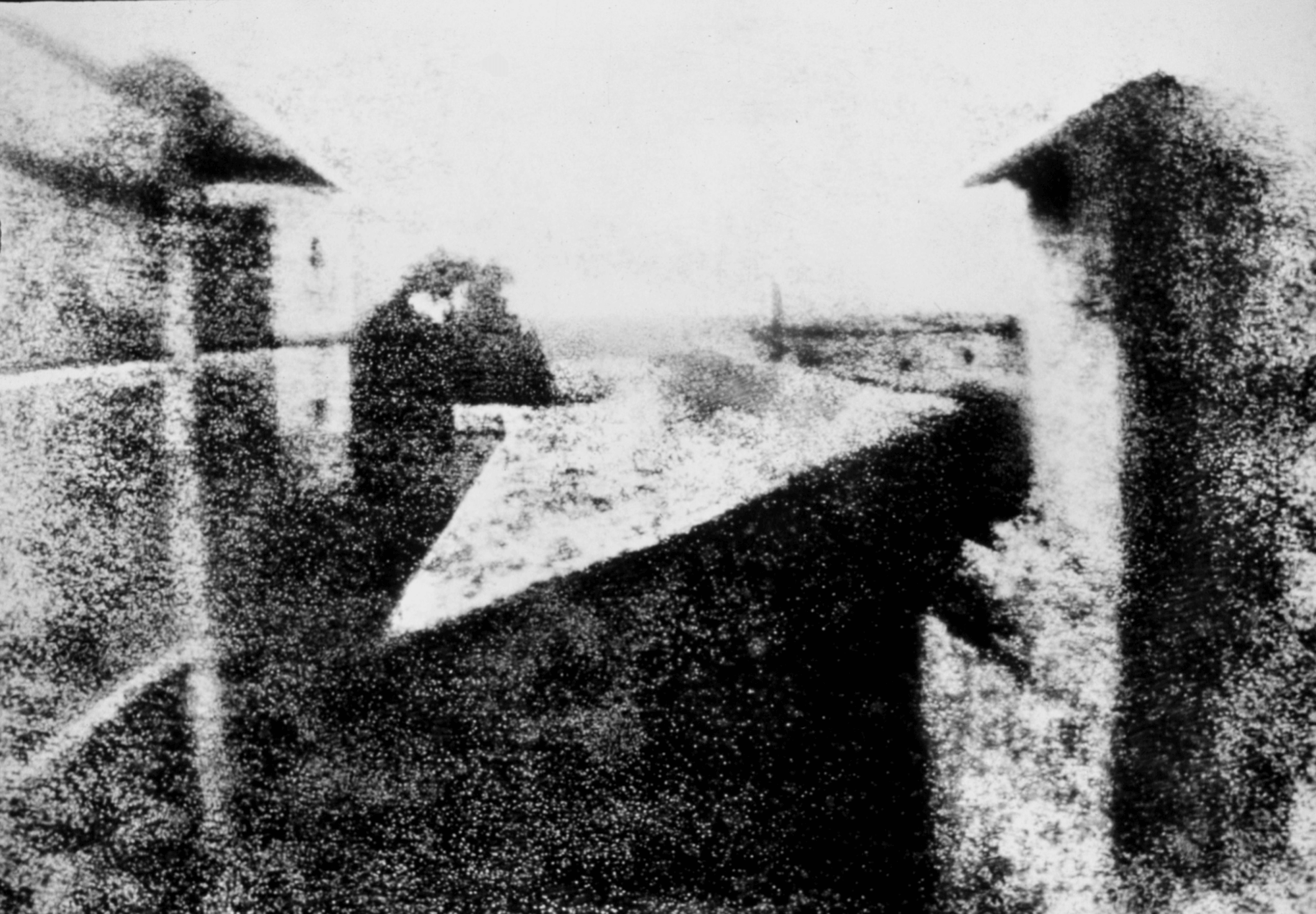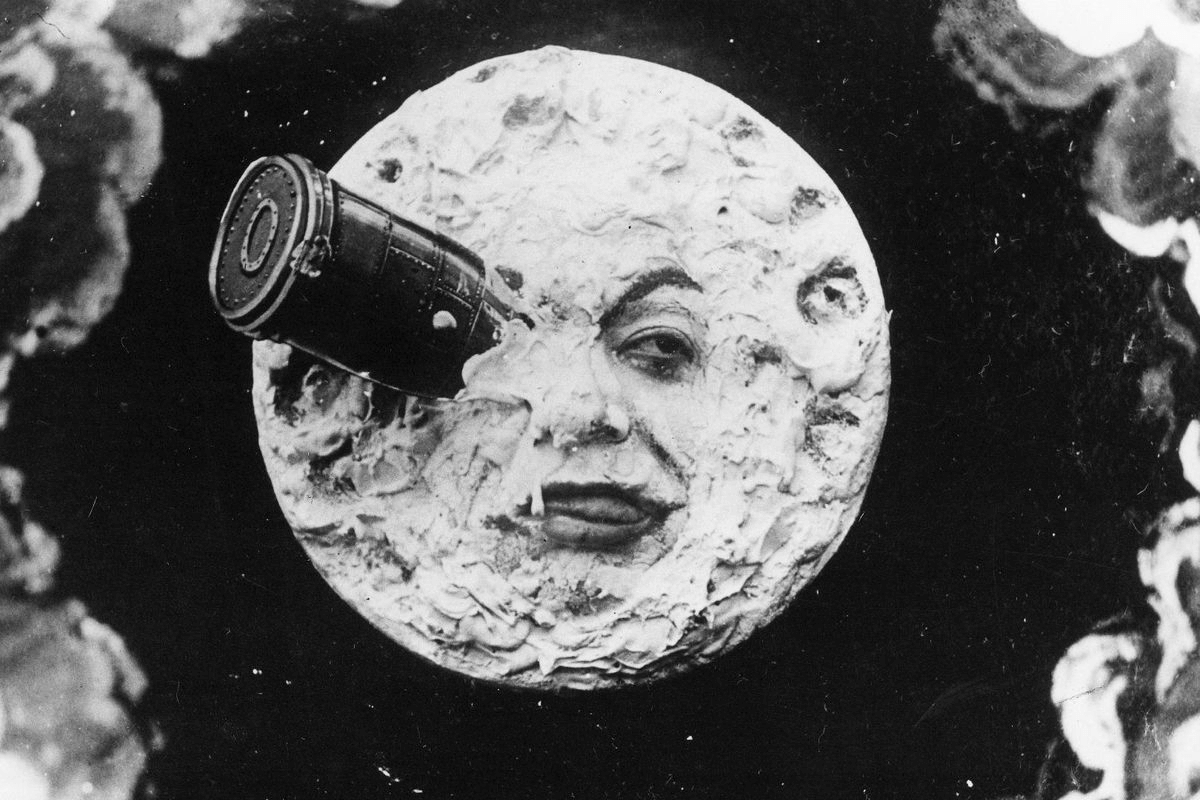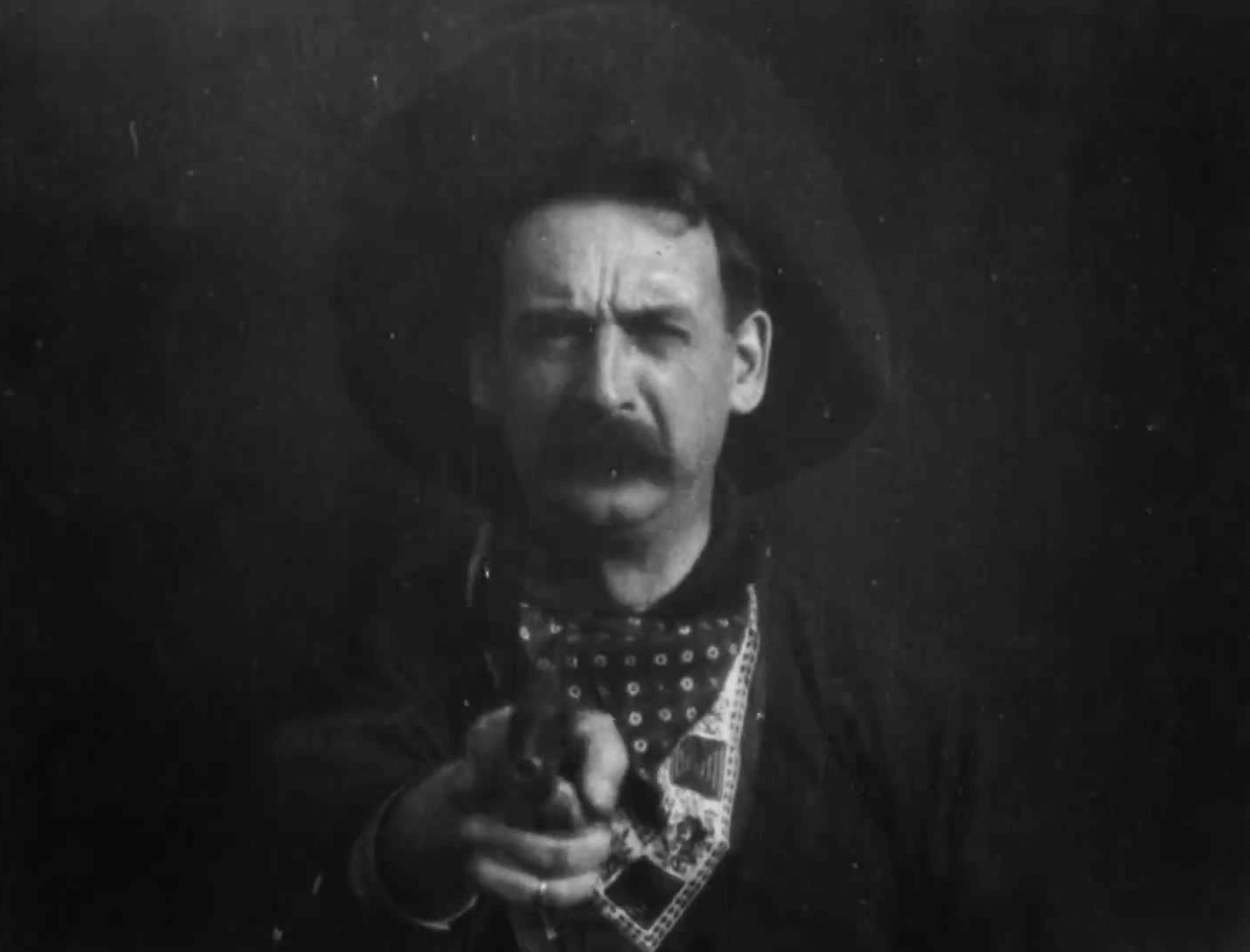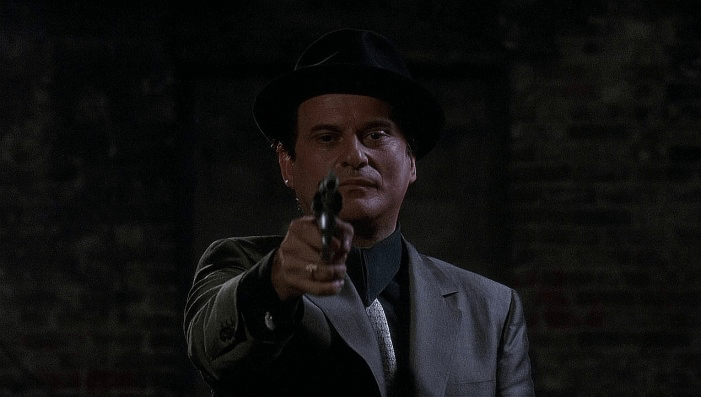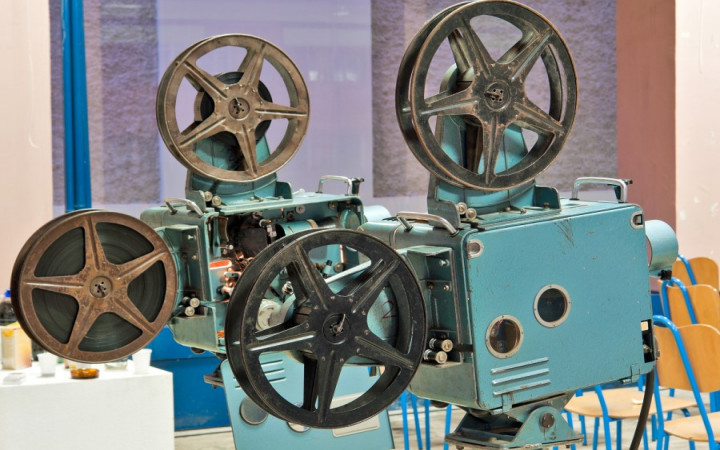Содержание
- Способ 1: Вставка видео из интернета
- Вариант 1: Word 2013—2021
- Вариант 2: Word Online
- Способ 2: Создание объекта из локального файла
- Вариант 1: Word 2007—2021
- Вариант 2: Word 2003
- Вопросы и ответы
Способ 1: Вставка видео из интернета
Актуальные версии текстового процессора позволяют интегрировать видеоролики напрямую из интернета. Для этого достаточно открыть специальное меню и вставить ссылку на нужную запись.
Обратите внимание! Вставить видеоролик в документ можно только в Word 2013—2021 годов выпуска и в Word Online, остальные версии текстового редактора не поддерживают такую функцию.
Читайте также: Как вставить файл Excel в документ Word
Вариант 1: Word 2013—2021
Чтобы выполнить поставленную задачу в Word 2013—2021, сделайте следующее:
- Откройте документ, в который нужно вставить видео, и перейдите во вкладку «Вставка». На панели инструментов кликните по пункту «Видео из Интернета», который находится в блоке «Мультимедиа».
- Если предполагаемый ролик будет взят с сайта YouTube, перейдите на соответствующую страницу и скопируйте из адресной строки ссылку на него.
- Вернитесь в Word и в ранее открытом окне «Вставка видео» поместите скопированную гиперссылку из буфера обмена в соответствующее поле. После этого нажмите клавишу Enter. Далее из списка выберите ролик и нажмите «Вставить».

Если видеозапись взята с другой площадки, ссылку на нее нужно вставлять в поле «Из кода внедрения видео». После этого ролик сразу же будет размещен на странице документа и его можно будет воспроизвести нажатием по кнопке Play.

Важно! На различных веб-ресурсах ссылка на видеоролик может находиться в разных местах, поэтому четких инструкций предоставлено не будет. Но зачастую код внедрения можно взять из контекстного меню проигрывателя.
Вариант 2: Word Online
В онлайн-версии текстового редактора процедура добавления видеозаписи отличается, так как графический интерфейс был полностью переработан.
- Откройте сервис в браузере и перейдите на вкладку «Вставка». При необходимости раскройте дополнительное меню панели инструментов и кликните по пункту «Видео из Интернета».
- В появившемся окне ознакомьтесь со списком ресурсов, со страниц которых можно добавлять ролики в документ. Информация на изображении ниже может быть неактуальна, так как Word Online постоянно обновляется разработчиками.
- Перейдите на сайт, откуда будет взято видео, и скопируйте ссылку из адресной строки. После этого вернитесь к документу и вставьте данные из буфера обмена в соответствующее поле в диалоговом окне.
- Завершите интеграцию видеоролика в документ нажатием по кнопке «Вставить».

После этого запись можно будет воспроизвести непосредственно в Word Online, кликнув по кнопке Play в отображающемся проигрывателе.

Способ 2: Создание объекта из локального файла
Если видео, которое нужно поместить в документ, находится во внутренней памяти компьютера, его интеграция выполняется через отдельное меню. Стоит отметить, что после добавления ролик не будет воспроизводиться непосредственно на странице, для этих целей откроется штатный проигрыватель.
Обратите внимание! Разместить видео из внутренней памяти компьютера в документе можно только в установленных программах, онлайн-версия Microsoft Office эту функцию не поддерживает.
Читайте также: Как вставить изображение в документ Microsoft Word
Вариант 1: Word 2007—2021
Чтобы вставить видеозапись, которая находится на диске компьютера, необходимо сделать следующее:
- Откройте документ и перейдите во вкладку «Вставка». В блоке «Текст» раскройте выпадающее меню «Объект» и выберите пункт «Объект».
- В появившемся окне перейдите на вкладку «Создание из файла» и кликните по кнопке «Обзор».
- После открытия файлового менеджера перейдите в директорию, где находится видеофайл, выделите его и кликните «Вставить».
- Завершите процесс интеграции внешнего ролика нажатием по кнопке «ОК». После этого запустить видео можно двойным нажатием по добавленному объекту.

Обратите внимание! Итоговый значок для запуска видеозаписи можно изменить на любой другой. Для этого нужно установить отметку напротив пункта «В виде значка» и нажать по кнопке «Сменить значок». После в окне файлового менеджера потребуется выбрать картинку, которая заменит стандартную иконку.

Вариант 2: Word 2003
Разместить видео в качестве объекта в документе можно аналогичным образом и в Word 2003, но разница заключается в интерфейсе программ, особенно на начальном этапе. Чтобы раскрыть окно для добавления ролика с компьютера, необходимо развернуть выпадающее меню «Вставка» и выбрать опцию «Объект».
После этого потребуется выполнить все действия, представленные в предыдущей инструкции, начиная со второго шага. В результате на странице разместится интерактивный объект, после нажатия по которому запустится проигрыватель.
В отличие от всех остальных версий текстового процессора, в Word 2003 есть возможность вставить в документ видео со внутренней памяти компьютера с возможностью воспроизведения непосредственно в программе. Для этого сделайте следующее:
- Раскройте меню «Вставка» и выберите пункт «Объект». В открывшемся окне на вкладке «Создание» выделите в списке строку «Windows Media Player» и кликните по кнопке «ОК».
- В окне программы появится проигрыватель, размещенный на странице документа. Кликните по нему левой кнопкой мыши, после чего на панели инструментов нажмите по пункту «Окно свойств».
- В появившемся диалоговом меню в строке «URL» укажите путь к видеоролику, который нужно интегрировать в Word 2003. Вписывать информацию потребуется вручную. После этого закройте окно.

Чтобы в будущем воспроизвести видеозапись, необходимо кликнуть один раз по проигрывателю, а затем нажать по кнопке «Конструктор форм», расположенной на панели инструментов.
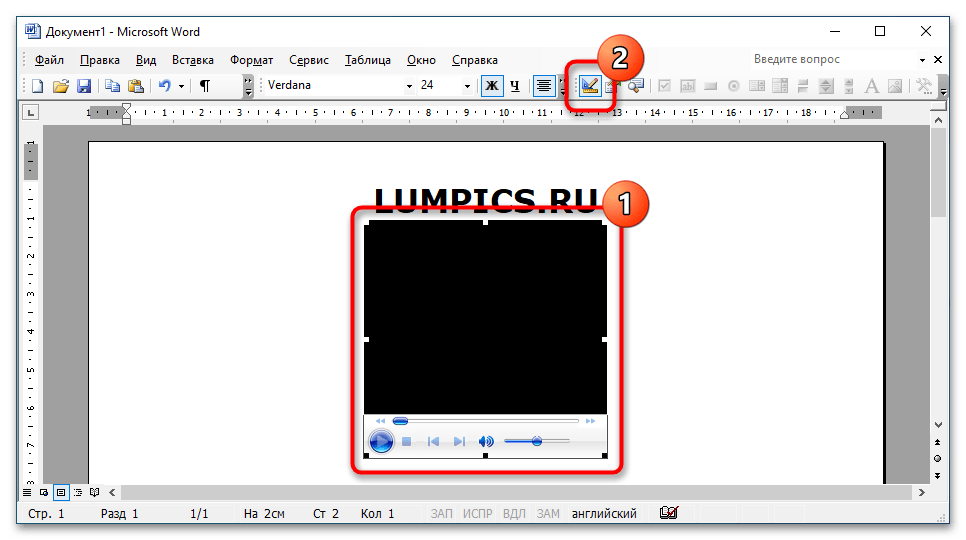
Еще статьи по данной теме:
Помогла ли Вам статья?
If you’re a movie fan, you’ve probably wondered, What’s the first movie ever made? This is a great question, and a somewhat complicated one.
In the late 1880’s various people began experimenting with photo, blending them together to give the illusion of a motion picture. But the technology and difficulty to capture that sort of video made motion pictures rare.
Even so, here are a couple of the very first movies:
The Horse In Motion (1878)
This groundbreaking motion photography was accomplished using multiple cameras and assembling the individual pictures into a a single motion picture. it’s something that you could do today, using a few cameras that are set to go off at an exact moment. The movie was made to scientifically answer a popularly debated question during this era: Are all four of a horse’s hooves ever off the ground at the same time while the horse is galloping? The video proved that they indeed were and, more importantly, motion photography was born.
Roundhay Garden Scene (1888)
The world’s earliest surviving motion-picture film, showing actual consecutive action is called Roundhay Garden Scene. It’s a short film directed by French inventor Louis Le Prince. While it’s just 2.11 seconds long, it is technically a movie. According to the Guinness Book of Records, it is the oldest surviving film in existence.
Arrival of a Train (1895)
This 50-second silent film shows the entry of a train pulled by a steam locomotive into a train station of the French coastal town of La Ciotat. It’s a single, unedited view illustrating an aspect of everyday life, and the film consists of one continuous real-time shot. There’s also a an urban legend associated with this movie that says when the film was first shown, the audience was so scared by the image of a life-sized train barreling toward them that people screamed and ran to the back of the room.
With modern-day smartphone technology giving us the ability to make a high-quality movie almost instantly, it’s hard to believe there was a time before making a film was simple, cheap, and easy.
In fact, for many years, the most engaging motion pictures of the past were the stories told by your parents and grandparents, and later on, crackling audio scratched from a large vinyl disk and projected to your ears from a wooden box. Pretty primitive stuff.
But this all changed thanks to the work of one man: Eadweard Muybridge.
His experimentations and endeavors, often funded by generous benefactors, reshaped the possibilities of society and paved the way for what we now consider staples of modern life: easily accessible and digestible visual content.
We’ll get to the details of who, where, why, how, and when, but this, for your viewing pleasure, is the first movie ever made:
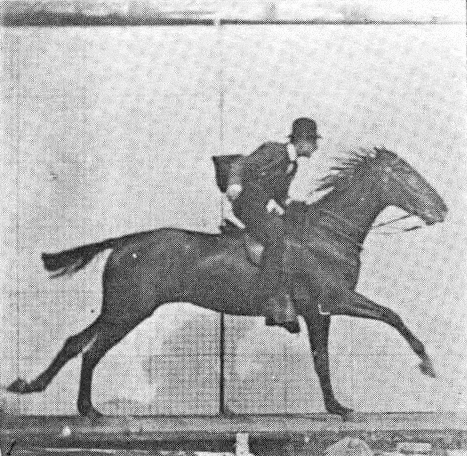
It’s an 11-frame clip shot on June 19th, 1878 using twelve separate cameras (frame 12 was not used) to film a man riding a horse on Leland Stanford’s (the founder of Stanford University) Palo Alto Stock Farm (the eventual site of Stanford University).
Not exactly the high-action, special effects-driven, Braveheart-style, Hollywood blockbusters that grace our cinema screens today, but pretty impressive considering no one ever, in the history of the entire world, had made a movie before.
Who Made the First Movie?
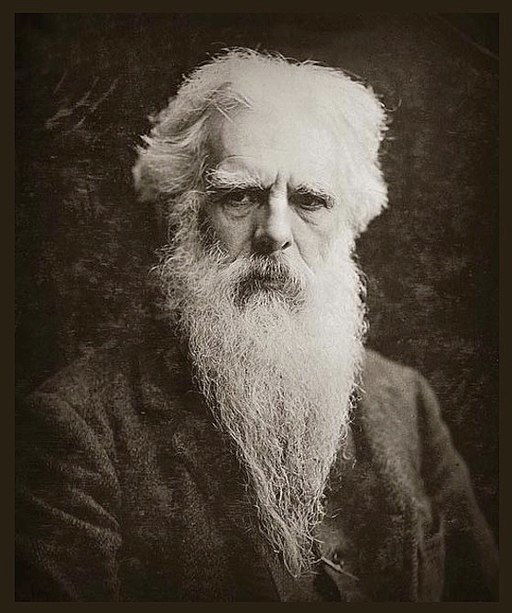
As mentioned, the man we have to thank for this11-frame cinematic first is Eadweard Muybridge.
He was born Edward James Muggeridge on April 4th, 1830, in England, and for some unknown reason, later changed his name to the far harder to spell, Eadweard James Muybridge. During his twenties, he traveled across America selling books and photographs before a serious head injury he suffered in a stagecoach accident in Texas in 1860 forced him back to England for rest and recovery.
There, he married 21-year old Flora Shallcross Stone and fathered a child. Upon discovering letters between her and a local drama critic, Major Harry Larkyns, discussing the fact that Larkyns may have fathered Muybridge’s 7-month old son, he shot Larkyns point-blank, killed him, and was arrested that night without protest.
At his trial, he pleaded insanity on the grounds that his head injury had dramatically altered his personality, but undercut this plea by his own insistence that his actions were deliberate and premeditated.
The jury dismissed his insanity plea but he was eventually acquitted on the grounds of justifiable homicide. It turns out that in the 1900s, it’s completely OK to kill your wife’s alleged lover in a rage of passion.
This, ladies and gentlemen, is the person we have to thank for creating the first movie.
Why the First Film was Made
In 1872, one of the main barroom debates revolved around this question: when a horse is trotting or galloping, are all four of the horse’s feet off the ground at the same time?
The answer to this question is plainly obvious to anyone who has ever seen slow-motion footage of a horse in full flight, but it’s much harder to be certain when the animal is moving at full speed.
Exhibit A:
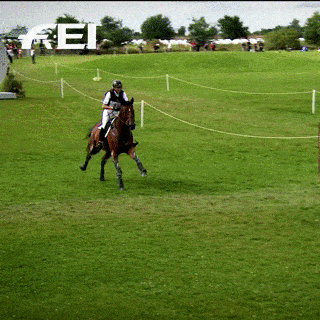
Exhibit B:
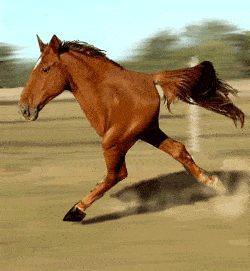
In 1872, the then-governer of California, racehorse owner, and eventual founder of Stanford University, Leland Stanford, decided to settle the debate once and for all.
He reached out to Muybridge, who at that time was a famous photographer, and offered him $2,000 to prove conclusively whether a horse ever engaged in ‘unsupported transit‘.
Muybridge provided conclusive proof of what we now take as common knowledge in 1872 when he produced a single photographic frame of Stanford’s horse “Occident” trotting with all four feet off the ground.
When and Where the First Movie was Made
This initial experiment spurred Muybridge’s interest to capture a sequence of images of a horse in full gallop, but the photographic technology of the time was inadequate for such an endeavor.
Most photo exposures took between 15 seconds and a minute (meaning the subject had to remain still for that entire time) making them completely unsuited for capturing an animal running at full speed. Also, automatic shutter technology was in its very early infancy, making it unreliable and expensive.
He spent the next six years (partly interrupted by his murder trial) and spent over $50,000 of Stanford’s money (more than $1 million in today’s money) improving both camera shutter speeds and the film emulsions, eventually bringing the camera shutter speed down to 1/25 of a second.
On June 15th, 1878, he placed 12 large glass-plate cameras in a line at Stanford’s Palo Alto Stock Farm (now the Stanford University campus), set up a sheet in the background to reflect as much light as possible, and rigged them with a cord to fire sequentially as the horse passed.
The results are the 11 frames of the very first movie ever made (the 12th frame was not used in the final movie).
But, having 11 frames shot in sequence doesn’t make a movie.
How the First Movie was Made
To make a movie, the frames need to be viewed consecutively at high speed. This is a simple feat to accomplish today, but no device capable of presenting these images existed in 1878, so Muybridge created one.
In 1879, Muybridge devised a way to view his famous galloping horse images in sequence at high speed. It consisted of a circular metal housing with slots that held 16-inch glass disks. The housing was cranked in a circular motion by hand and the images from the glass disks would be projected onto a screen just like this:
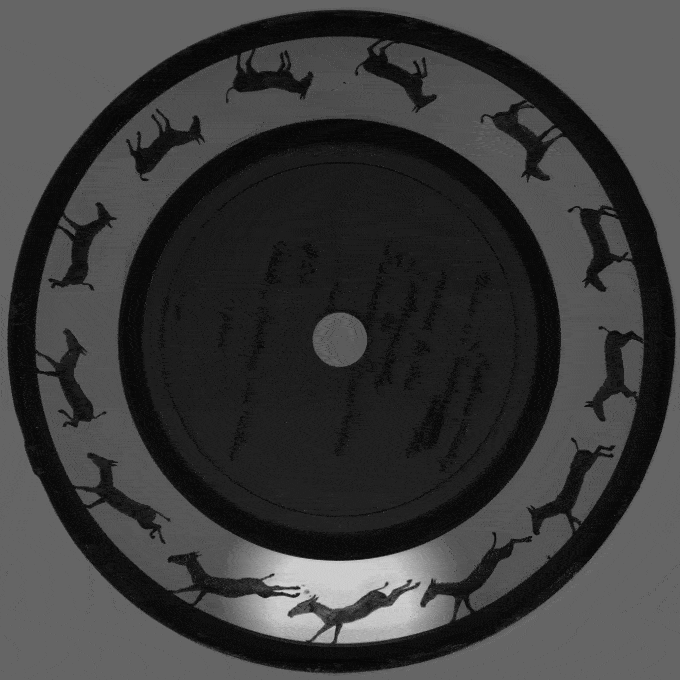
This was initially named a Zoographiscope and zoogyroscope, but eventually became the zoöpraxiscope.
The First Motion Picture
The first motion picture ever shot was Roundhay Garden Scene shot in 1888. Louis Le Prince and dazzles with eye with a remarkable display of 4 people walking in a garden created this 2.11 second cinematic masterpiece.
You might want to sit down for this:
Told you so 🙂
The First Film with Sound
The evolution of sound in movies has walked a complicated path. Here’s a brief summary:
The First Film with Accompanying Sound
The first film ever created with an accompanying soundtrack was William Dickson’s test project on Thomas Edison’s latest invention – The Edison Kinetophone.
The Kinetophone was a combination of Thomas Edison’s single-viewer movie player The Kinetoscope with his wax cylinder phonograph.
If you were one of the lucky few to witness it in late 1894 or early 1895, this is what you would have seen.
The complex plot structure, lack of true character development, and sub-standard special effects left audiences and critics unimpressed 🙂
The obnoxiously large cone on the left-hand side of the screen is a microphone connected to wax cylinder recorder sitting just off-screen.
The Kinetophone’s drawback of only being viewable by one person at a time, combined with advancements in projection technology making movie viewing into a group experience, resulted in the Kinetophone being superseded before it could gain widespread (or any) popularity.
The Short Film with Sound
Between 1900 and 1910, a number of significant advancements in film and sound technology were made.
The first was a number of devices that mechanically linked a film projector with a disc player to synchronize sound.

The visuals were typically captured on a machine such as a Chronograph, with sound recorded on a Chronophone. These two separate elements were then later synchronised to create the movie.
Just like the Kinetophone, these machines had significant limitations. They were extremely quiet, could only record a few minutes of audio, and if the disk jumped, the following audio would be out of sync.
These limitations prevented them from ever being used for more than short films, and they were never adopted in Hollywood.
The First Hollywood Film with Sound
Over the next 10 years, two major developments transformed cinema.
The Tri Ergon Process
The first was the ‘sound on film’ or Tri Ergon process.
Invented by Engl Josef, Massolle Joseph, and Hans Vogt in 1919, it translated sound waves into electrical pulses and then into light, allowing the sounds to be hardcoded directly onto the film next to the accompanying images.
This eliminated the problem of soundtracks skipping, which produced a higher-quality product for consumers to enjoy.
The Audion Tube
The second major advancement was the development of the Audion Tube.

Originally invented by Lee De Forest in 1905, the Audion Tube allowed for the amplification of electrical signals and was used in a number of different technology applications.
He later combined this technology with a sound-on-film process of his own development, called the Phonofilm, sparking a craze in short movie production.
Nearly 1,000 short films with sound were produced in the 4 years following the Phonofilm’s development in 1920.
None of these, however, were Hollywood productions.
The Vitaphone

The Phonofilm failed to impress Hollywood and it was never adopted by any studio. The first sound and film system to be taken seriously was the Vitaphone.
The Vitaphone was a sound-on-disk system developed by General Electric, a company that had gone into business with a relatively small studio called Warner Brothers Pictures Incorporated.
The First Hollywood Movie with Sound
Together, Warner Brothers and General Electric produced the first feature-length Hollywood film with sound called Don Juan.
Although it doesn’t have synchronized speech, it does have synchronized sound effects and a soundtrack recorded by the New York Philharmonic Orchestra.
Despite its popularity, Don Juan failed to recoup it’s production costs of $790,000 (roughly $11 million in today’s money) because most theaters lacked the facilities necessary to play films with sound.
The First Film with Speech
The critical success of Don Juan convinced Warner Brothers that film with sound was the future of cinema. This was contrary to what most of the cinema industry was doing because not only was there no standardized audio system readily available to upgrade cinemas, the actors, whilst skilled at pantomime, weren’t trained to talk in films.
The studio took on significant debt and spent nearly $3 million (more than $42 million in today’s money) rewiring all their cinemas to play audio recorded through the Vitaphone.
On top of this, in 1927, they announced that every film produced would be accompanied by a Vitaphone soundtrack.
To ensure their first film with speech was a success, they decided to adapt a popular broadway stage show at the time, The Jazz Singer. It was the second most expensive film ever produced at the time (behind Don Juan) staring popular actor of the time Al Jolson.
It was originally planned as a silent film with 6 synchronized songs performed by Jolson. However, in two scenes, dialogue improvised by Jolson made it into the final cut, making The Jazz Singer the first-ever film with dialogue (commonly referred to as a ‘Talkie‘).
Here’s the single weirdest movie trailer I’ve seen. I guess the art of creating an enticing trailer was still a few years off in 1927…
The audience response was overwhelming with co-star Eugenie Besserer recalling that when they started their dialogue scene “the audience became hysterical.“
The film became an overwhelming box-office success, taking over $3 million in ticket sales.
This was followed in 1928 by the first all-talking production on the Vitaphone, also created by Warner Brothers, called The Lights of New York.
The First Movie in Colour
The development of the first color film followed a similarly complicated path that of the first films with sound.
The First Film Presented in Colour
The first movie ever presented to the public in color wasn’t actually filmed in color. I know, confusing.
The movie, made by W.K.L. Dickson, William Heise, James White for Thomas Edison’s company Edison Co in 1895, was titled Annabelle Serpentine Dance, and it was intended to be viewed through the above-discussed Edison Kinetoscope.
For your viewing pleasure…
Bizarrely, this film has been rated more than 1,500 times on IMDB and even more bizarrely, it’s been rated as 6.4/10.
WHAT WERE YOU PEOPLE EXPECTING FROM A 30-SECOND MOVIE MADE IN 1895 AS THE FIRST ATTEMPT TO ADD COLOR TO A MOVIE???
The movie was shot in black and white with each individual frame hand-tinted after shooting, thus creating the first color movie without shooting the film in color.
The First Feature-Length Film Presented in Color
The technique of hand-tinting films quickly spread and it wasn’t long before the first feature-length, hand-tinted film was released.
In 1903, French directors Lucien Nonguet ad Ferdinand Zecca released La Vie et la Passion De Jésus Christ (The Passion and Death of Christ) with hand-tinted scenes created using the stencil-based film tinging process Pathécolor.
The Pathécolor process would continue to be used for nearly 3 decades with the last film released using this technique in 1930.
The First Film Filmed in Color
Up until the early 2000s, it was widely accepted that the first color film was those shot using the Kinemacolor System developed by George Albert Smith and launched by Charles Urban’s organization, Natural Color Kinematograph Company.
The Kinemacolor system exposed black and white film through alternating red and green filters. The camera filmed at 32 frames per second (one red and one green), which, when combined, gave them the silent film projection rate of 16 frames per second in color.
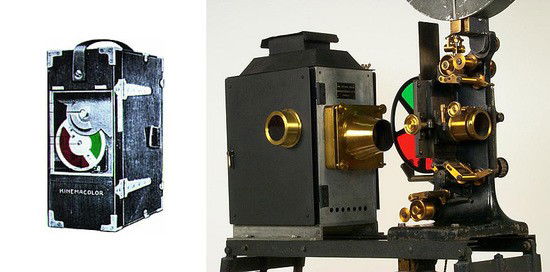
They found early success with their movie The Delhi Dubar – a two and a half-hour documentary of the coronation held in Dehli of the newly crowned King George V in 1911 (India was still a British Colony at this time).
Here’s a short clip from the movie:
This belief was proven incorrect, however, with the discovery of Edward Turner’s color footage from ten years earlier.
His footage of London street scenes, a pet macaw, and his three children playing with a goldfish in the family’s back garden make his footage the first color footage ever shot.
He created color images by shooting each frame through three separate lenses, each with a different color filter (red, green, and blue) and combining those to create one singular color film.
The process was patented on March 22, 1899 by Edward Turner and Frederick Marshall Lee. This was actually the second color filming process patented after H. Isensee patented an earlier color filming process, but it was the first to prove effective.
Unfortunately, when Turner died in 1903, the man he passed his technology to in the hopes he could make it commercially viable, George Smith (yes, the guy in the above section), found the system unworkable and discarded it, eventually creating Kinemacolor in 1909.
The First Two-Color Hollywood Feature
Despite its success and wide acceptance in Europe, Kinemacolor struggled to break into the US film industry. This was largely thanks to the Motion Picture Patent Company – an organization established by Thomas Edison to ensure control of the motion picture industry and force movie producers to only use the technology of MPCC members.
This created space for a new color system to become the favorite of Hollywood producers and directors – Technicolor.
The Technicolor Motion Picture Corporation was formed in Boston in 1914 by Herbert Kalmus, Daniel Comstock, and W. Burton Wescott, who drew their inspiration for their company name from Massachusetts Institute of Technology, where Kalmus and Comstock studied.
Just like Kinemacolor, Technicolor was a two-color system, but instead of using alternating red and green filters, it used a prism inside the camera to split the incoming image into two streams filtered through both red and green lenses, which were then imprinted onto the black and white film strip simultaneously.
The first Hollywood two-color movie was filmed in 1917 titled The Gulf Between. Unfortunately, the film was destroyed in a fire on March 25, 1961, with only small fragments of footage surviving.
Luckily, the second Hollywood feature film shot in the two-color Technicolor system survived. You can watch it in full here:
I cannot vouch for the quality of the movie though, as it’s rated on 6.6/10 on IMDB – only 0.2 points higher than the 22-second, plotless, hand-colored clip of Annabelle Serpentine Dance. Good work IMDB.
The First Three-Color Hollywood Feature
The Technicolor Motion Picture Corporation continued to refine their process. They made big advancements in their two-color system (which can be seen in Mystery of the Wax Museum from 1933) and in 1932, they finally completed work on developing their three-color system.
Explore More Entertainment Articles
Their three-strip system also utilized a prism to split the incoming visual stream but this time, it was split into three streams – green, blue, and red.
The first movie released using this three-color system was a short Disney cartoon released in 1932 titled Flowers and Trees:
It wasn’t until 1934 that the first live-action, three-color Hollywood film was released. Here’s a short clip from that film, Service with a Smile:
This three-strip system would be used by Hollywood until the final Technicolor feature film was produced in 1955.
The Future of Film
The film industry isn’t going away any time soon. With a record of $42.5 billion of ticket sales in 2019, it’s clear that the industry as a whole is as strong as ever.
In saying that, the established players in the film production industry are facing challenges from emerging technology. The invention of the iPhone has placed cinema-quality cameras in the hands of everyday people, and with previously obscure film terms such as ‘storyboard‘ and ‘film shot list‘ becoming more and more common, the barriers to entering the film production industry are dropping dramatically.
Will they pose a threat to the established industry leaders? Only time will tell for sure. But if the pace of innovation over the last 100 years continues at the same rate, there are sure to be some shakeups.
READ MORE:
Cinema in Jamaica
Shirley Temple
History of Space Exploration
At one point or another, we’ve all asked the question: what was the first movie ever made? Was it the one with the train robbery? Was it the one where the moon had a face? Both The Great Train Robbery (1903) and A Trip to the Moon (1902) were early examples of movies, but neither was the first one. We’re going to answer the ever-so-elusive question to “what was the first movie ever made?” by placing it in historical context. By the end, you’ll know what the first movie ever made was and some fun facts about the early years of film.
Early photographic techniques
Before we jump into our analysis of the first movies ever made, let’s quickly review the historical context that led to their creation.
In 1825, French inventor Nicéphore Niépce captured the oldest surviving “fixed” photograph by channeling light through a camera obscura into a pewter block coated with bitumen. Whew, that’s a lot. Here’s the oldest surviving photograph in all its glory:
View from the Window at Le Gras (1825) by Nicéphore Niépce
It may seem benign by modern standards, but at the time, Niépce’s work was revolutionary. View from the Window at Le Gras set the stage for fifty years of photographic experiments, resulting in great works from Louis Daguerre, William Henry Fox Talbot, and more.
Read more about the history of photography →
What Was the First Ever Movie Made?
The Horse in Motion (1878)
By 1878, photographers had mastered the art of photographing images on fixed metal plates. But some asked: what if there was a way to photograph images in motion?
Motion pictures are all about tricking our eyes; taking images and projecting them fast enough to appear as if they’re moving. Oddly enough, the first motion picture produced was commissioned to settle a bet about whether or not horses galloped with all four hooves off the ground — English photographer Eadweard Muybridge was given the task by former California Governor Leland Stanford.
Check out a quick video on Muybridge and his breakthrough film The Horse in Motion below.
First Film Ever Made • Slices of Time: Eadweard Muybridge’s Cinematic Legacy
Eadweard Muybridge’s The Horse in Motion is widely cited as the first movie ever made — but was it the first movie ever made? Well, yes, but perhaps not in the way you think. The Horse in Motion was initially a series of photographs; it didn’t turn into a motion picture until 1880, when Muybridge began projecting it onto a zoopraxiscope disc.
For more on the zoopraxiscope, check out the video below.
When Did Movies First Come Out? • Guide to Muybridge’s Zoopraxiscope
If we’re judging “movie” by its dictionary definition, The Horse in Motion was the first movie ever made. You might be thinking “okay I get that, but what was the first movie ever made really?” And that’s a fair question. So, without further ado, let’s move on to movie #2.
When Did Movies First Come Out?
Roundhay Garden Scene (1888)
French artist and inventor Louis Le Prince did more to develop movies than almost anybody in the history of film. The only reason most people haven’t heard his name is because he mysteriously disappeared before showing his movies to the masses.
In 1888, Le Prince produced a few short films (the first of their kind). And when I say short, I mean short. Like as in two seconds short. Check out his most iconic film, Roundhay Garden Scene, below.
What Was the First Ever Movie Made? • Roundhay Garden Scene by Louis Le Prince
Crazy right? It seems funny now, but at the time Le Prince’s work was awe-inspiring. Le Prince’s filmmaking process inspired thousands – including Thomas Edison and the Lumiere Brothers – to research motion pictures. If you want to see something truly crazy, check out this restoration of Roundhay Garden Scene from Denis Shiryaev.
Roundhay Garden Scene by Louis Le Prince, Restored and Remastered by Denis Shiryaev and Neural Networks
Shiryaev says he used artificial intelligence and neural networking to stabilize and color the film – and boost it to 60 frames-per-second. It’s possible that AI will soon be able to restore damaged films autonomously.
First Movie in the World and Beyond
Legacy of the first movies ever made
The legacy of the first movies ever made live on in every part of cinema – but the works of Muybridge and Le Prince have been largely overshadowed by the works of Thomas Edison, Georges Méliès, and the Lumiere Brothers. To put in other terms, Muybridge and Le Prince may have gotten to the finish line first, but they were at a race with few spectators and even less reporters.
Ten years after their race, Edison, Méliès, and the Lumieres competed in their own race with ten times the spectators and twenty times the reporters.
Here are a couple of other films that are often erroneously credited as “the first movie ever made.”
A TRIP TO THE MOON (1902)
When Was the First Movie Ever Made? • Long Before A Trip to the Moon
A Trip to the Moon wasn’t the first movie ever made. Heck, it wasn’t even Méliès’s first movie. Méliès started making movies in 1896! So why do people consider A Trip to the Moon the first movie ever made? Well, because it’s the film most scholars tell students to watch to learn about Méliès. And since Méliès is regarded by some as “the first filmmaker,” it’s natural for people to think A Trip to the Moon was the first movie ever made. It wasn’t. But it makes sense why people would think it was.
Here’s a great video on Méliès and his amazing impact on cinema.
Who Made the First Movies? • Melies – Master of Illusion by Crash Course Film History
A Trip to the Moon was a landmark film for French cinema. Now that we’ve reviewed why it was so important, let’s take a look at the American film that’s often incorrectly termed the first movie ever made.
THE GREAT TRAIN ROBBERY (1903)
First Ever Movies Made • The Great Train Robbery
The Great Train Robbery is mandatory viewing for every American history course. The film symbolizes turn-of-the-century American-life from social upheaval to technical achievement, perhaps better than any source of its era.
You can watch the entire 13+ minute film below thanks to The Library of Congress.
What Was the First Movie Ever Made? • The Great Train Robbery via The Library of Congress
So, why do people think The Great Train Robbery was the first movie ever made. Well, probably because they saw it in school; maybe they heard a teacher refer to it as “the oldest movie ever made” and ran with it. Who’s to say for certain?
But if one thing’s for certain, it’s that The Great Train Robbery has had an enormous influence on cinema. Martin Scorsese revered the film so much that he paid homage to it with the final shot of Goodfellas.
The Influence of the First Ever Movies Made • Goodfellas Ending
Over time, the truth is often muddled. But now you know, the first movie ever made was Eadweard Muybridge’s The Horse in Motion. The works of Louis Le Prince, Thomas Edison, the Lumiere Brothers, and Georges Méliès were all important – but they weren’t the first.
Up Next
What is Persistence of Vision?
Did you know that there’s a term used to define the trick that convinces our eyes to see moving images? It’s called persistence of vision – and it’s perhaps the greatest trick ever pulled. Up next, we explore how artists and animators use knowledge of persistence of vision to trick the human eye in exciting ways.
Up Next: Persistence of Vision Explained →
SCIENCE
Have You Ever Wondered…
- What was the first movie ever made?
- Was the first movie ever made created for entertainment purposes?
- When did movies with sound begin?
Isn’t it fun to go to the movies? In addition to getting to munch on a big bucket of delicious buttery popcorn, there’s nothing quite like seeing your favorite movie stars light up the silver screen.
Today, movie theaters offer such a unique movie-going experience. Watching a movie on a screen 100 times bigger than your average television blows most viewers away. If you get the chance to see a movie in 3-D, it’s even more awesome, since the action seems to jump right off the screen at you.
We take a lot of the technology behind movies for granted. After all, most of us have grown up in a world in which special effects in movies have always existed. Seeing a talking dog in a movie? No big deal! We see them all the time!
Movie technology hasn’t always been as awesome as it is today, though. If you look back at the history of movies, you’ll realize that the first movies didn’t even have sound! It might be hard for you to imagine enjoying a movie without sound, but the first movies were revolutionary.
Think about it. You’re living over 100 years ago during a time when photographs aren’t very common. To take a photograph, you need very expensive, specialized equipment. Now try to imagine seeing that photograph come to life and actually move! The concept of moving pictures was hard for many people to wrap their minds around.
Several pioneers of photography technology began experimenting in the late 19th century. It took a while to develop even the most basic techniques that would make a picture appear to move. The first moving picture was a novelty that wasn’t even intended to entertain. Instead, it was created to answer a scientific question.
In 1878, Englishman Eadweard Muybridge created a brief moving picture known as The Horse In Motion. California senator Leland Stanford, who was also a railroad tycoon, racehorse owner, and eventual founder of Stanford University, asked Muybridge to use technology to settle a question debated by horse owners: when a horse runs, does it ever have all four hooves off the ground at the same time?
Muybridge used multiple cameras to film a horse in motion. He then took the separate photographs and assembled them into a stop-motion movie that proved conclusively that the answer to Stanford’s question was yes, when a horse runs, there is a split-second during which all four hooves are off the ground simultaneously.
Most of the early movies that followed Muybridge’s brief demonstration of what could be achieved by motion—picture technology were short, silent films. Many were just a few seconds long. The earliest movies created for entertainment were just a few minutes long.
Over the next few decades, motion—picture technology grew by leaps and bounds with the invention of the first motion—picture cameras. As technology improved, film production companies began to make movies and business people began to open cinemas to show the films.
In the 1920s, film production companies began to add sound to films. In 1927, The Jazz Singer became the first full-length feature film to feature dialog synchronized with the picture to create a true “talking» film.
Wonder What’s Next?
You might want to bring your heavy coat to Wonderopolis tomorrow!
Try It Out
We hope today’s Wonder of the Day helped you see the big picture when it comes to the history of movies! Have fun with a friend or family member when you check out the following activities:
- What are some of the best movies of all time? Well, one way to put together a list of some of the best movies ever would be to look at all of the movies that have won an Oscar for Best Picture over the years. If you jump online, you can head over to the Internet Movie Data Base to look at just such a list. Scroll through and make note of the movies that have won the top award over the last 10-20 years. How many of these films have you seen already? Which ones would you like to see?
- How much have movies changed in your lifetime? Find out! You’ll need to find a movie from the year you were born, as well as a movie from the current year. If you need to, rent the movies from a video store or borrow them from the library. You might also be able to find them online or in the personal collection of a friend or family member. Compare and contrast the films. In what ways are they similar? How are they different? How have special effects changed through the years? Have fun seeing for yourself exactly how far films have come over the last several years!
- Up for a challenge? Make your own movie! You’ll need a story, of course. You’ll also need actors, places to shoot your film, and a video camera of some sort. Come up with a story and then put together your cast. Get a camera (a smartphone with video capability works fine!) and start shooting your scenes. You can make your movie as short or as long as you want. If you have a friend or family member who knows how to use video editing software, ask for some help making your movie look as professional as possible. Have fun making your own movie. You never know when this might be your start on a Hollywood career!
Did you get it?
Test your knowledge
Related Wonders for You to Explore

















